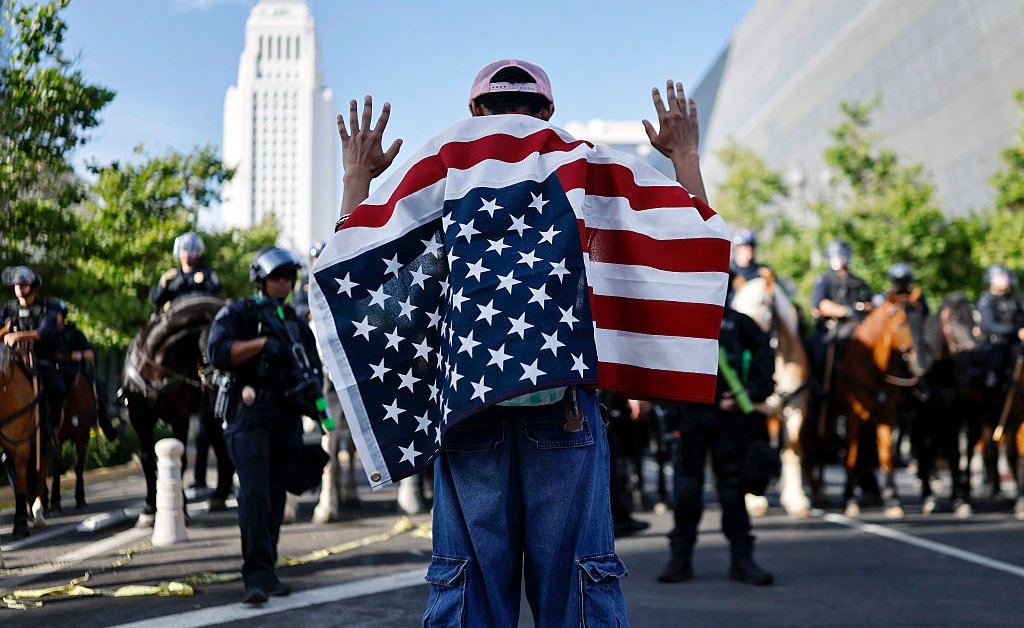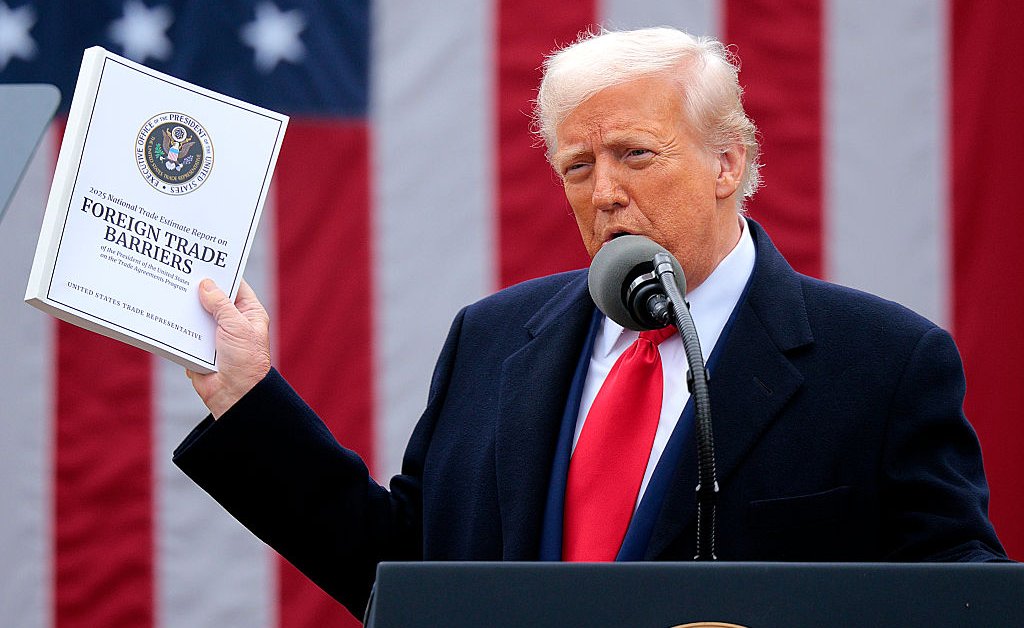The 2020s have so far been an incredibly hostile era to protest in the United States. The latter stages of the first Trump Administration witnessed police backlash to peaceful Black Lives Matter demonstrations and during Joe Biden’s presidency, thousands of pro-Palestine student activists across the country suffered police violence and arrest. Trump’s second term has unleashed a torrent of assaults on protest and dissent, from revoking visas and disappearing activists, to withholding federal funds from universities that won’t dismantle diversity initiatives.
These attacks on political expression strike at the heart of American democratic principles. Not only does the Constitution protect free speech, the nation’s founding history also seemingly legitimizes the right to protest. The United States is, after all, a country born of dissent. As a result of that history, those rights and freedoms were enshrined into the very first amendment of the U.S. Constitution.
Or so the story goes.
While American history is full of those claiming the Revolutionary right to resist, it is also full of officials fighting to shut them down. The historical record demonstrates that since the dawn of the republic, the right to protest has been challenged and contested by those in power. Recognizing this legacy is critical as the 250th anniversary of the Declaration of Independence approaches in 2026.
To many early Americans, particularly those within the Washington and Adams administrations, self-government rendered popular protest illegitimate and obsolete. While dissent may have been required to protect colonial liberties under British imperialism, Americans now governed themselves. Samuel Adams, a former Patriot leader, declared that while protest had “served an excellent purpose” during the Revolution, “as we now have constitutional and regular governments and all our men in authority depend on upon the annual, free elections of the people, we are safe without [it].” As Adams viewed it, to resist government power was to oppose the will of the majority, which was, in essence, to trample upon the Revolution’s achievements and instead embrace tyranny. Discontented citizens should wait for recourse at the next election. Until then, they should keep quiet.
The Whiskey Rebellion, a 1794 tax resistance in western Pennsylvania, Virginia, and Maryland, offered the first opportunity for a strong state crackdown on popular dissent. The “whiskey rebels,” as the activists’ critics referred to them, drew upon the tactics, rhetoric, and ideologies of the American Revolution and earlier protest movements to oppose a new tax on whiskey that disproportionately burdened the western economy. These frontiersmen organized committees of noncompliance, circulated petitions, raised liberty poles, and terrorized local tax officials to pressure for repeal. They claimed to defend the spirit of 1776 by resisting an unjust tax, just as the Patriots had done under the British.
But those in power refuted these links and instead emphasized the disloyalty and illegitimacy of disobeying the will of the majority. “They quarrel with a constitution and government purchased at the expense of much blood and treasure, and framed by themselves,” proclaimed the Pennsylvania Chief Justice. “They despise the rulers of their own choice, and trample on laws of their own making.”
The Washington Administration came down hard on the whiskey rebels. The president led 15,000 federalized militiamen from Virginia, Maryland, New Jersey, and Pennsylvania into the west—though no rebel army materialized to oppose them. Still, federal forces arrested hundreds of activists, some on charges of treason. Although Washington ultimately chose to pardon everyone involved in the Whiskey Rebellion, the government had proved its point; it would not allow such displays of opposition.

President John Adams used the same playbook when another tax resistance in Pennsylvania broke out during his term. In 1799, citizens in the eastern part of the state organized to resist a new property tax that unfairly targeted farmers over land speculators. The tax imposed higher rates for those who improved their holdings, building houses and clearing farmland, and lower rates for those who merely held onto their plots as an investment. Once the Adams Administration threatened to send in troops, protestors quickly backed down and promised to obey the law. Nevertheless, Adams followed through and nearly 3,000 men marched on eastern Pennsylvania, despite the residents having already acquiesced to the law. “Government should not cringe,” declared one official in justification of the mission. Clearly, this show of federal strength was not about enforcing law and order; it was intended to prevent future protests by sending a clear message to those who had dissented.
The Adams Administration also used legislation to try to silence its critics. In 1798, Congress passed the Sedition Law, which made it a federal crime to state or print criticism of the government. They used this law primarily to imprison newspaper editors loyal to the opposition party, but also occasionally employed it to punish protestors. For instance, federal authorities used it to arrest and charge two activists in Dedham, Massachusetts for raising a liberty pole criticizing the Adams Administration’s policies. One of them, despite not even being present on the day of the pole-raising, received the harshest sentence issued under the Sedition Law: a $480 fine and eighteen months imprisonment. He ended up serving two years because he could not afford the fine.
One can, of course, look beyond the founding period to find other examples of state repression of dissent. Government officials and police have attempted to muzzle activists fighting for every progressive cause in the nation’s history: abolition, Indigenous rights, suffrage, feminism, LGBTQ+ rights, Black civil rights, environmentalism, and so on.
Perhaps we should understand the Revolution nearly 250 years ago not as the birth of an American protest tradition, but as the origin of its potential demise. In the early years of the republic, a tradition of repressing dissent arose alongside dissent itself. In that sense, those who appeal to founding principles to counter recent authoritarian tactics are on a fool’s errand. As Americans today courageously rise to protest, they are engaging in a 250-year-old battle pitting the people against a state that may wish to silence them.
Shira Lurie is the author of The American Liberty Pole: Popular Politics and the Struggle for American Democracy in the Early Republic and the Special Series Editor for the “Road to 250.”
The Road to 250 series is a collaboration between Made by History and Historians for 2026, a group of early Americanists devoted to shaping an accurate, inclusive, and just public memory of the American Founding for the upcoming 250th anniversary.
Made by History takes readers beyond the headlines with articles written and edited by professional historians. Learn more about Made by History at TIME here. Opinions expressed do not necessarily reflect the views of TIME editors.








